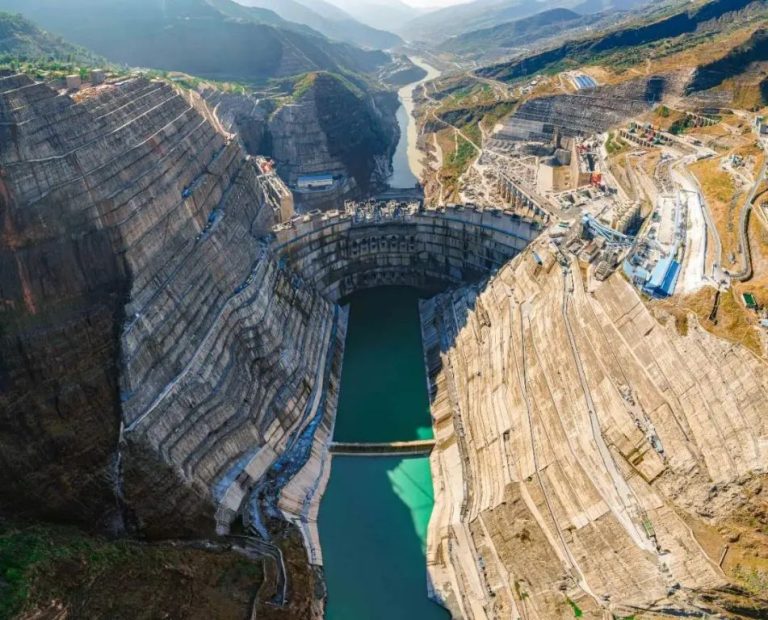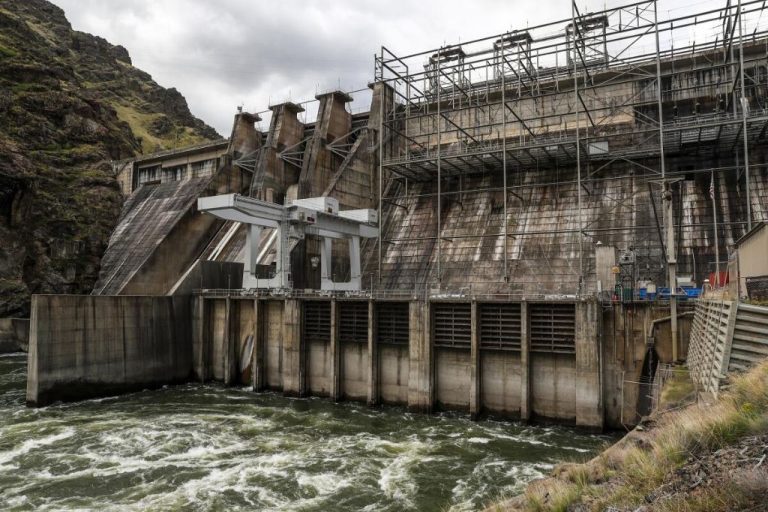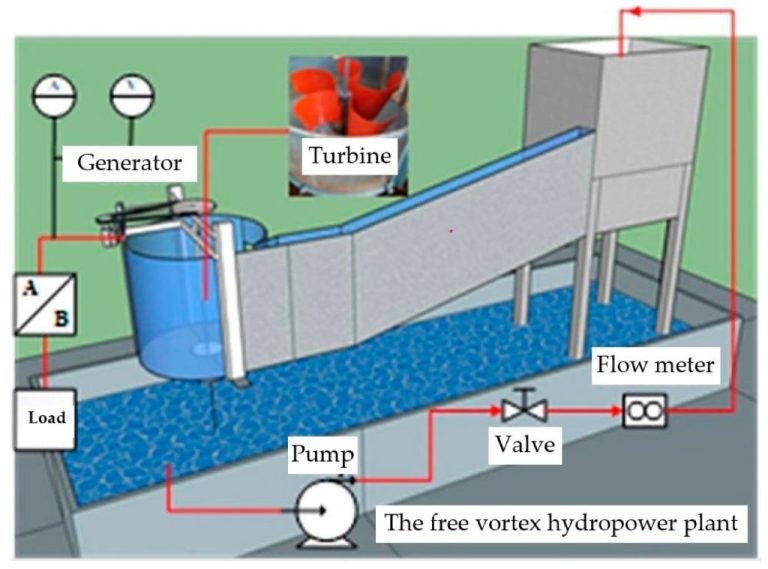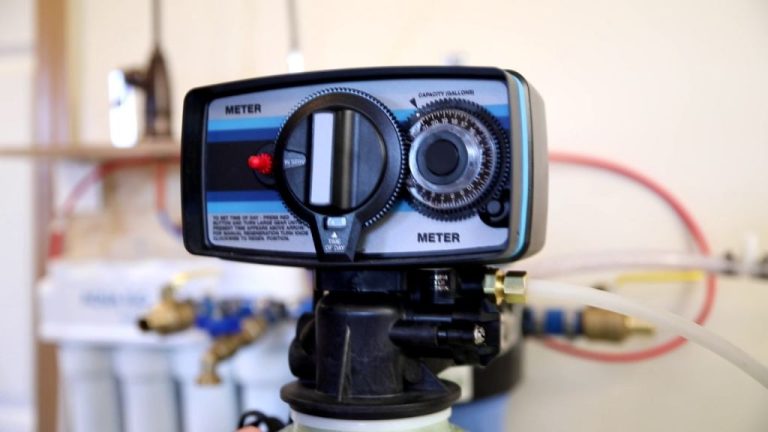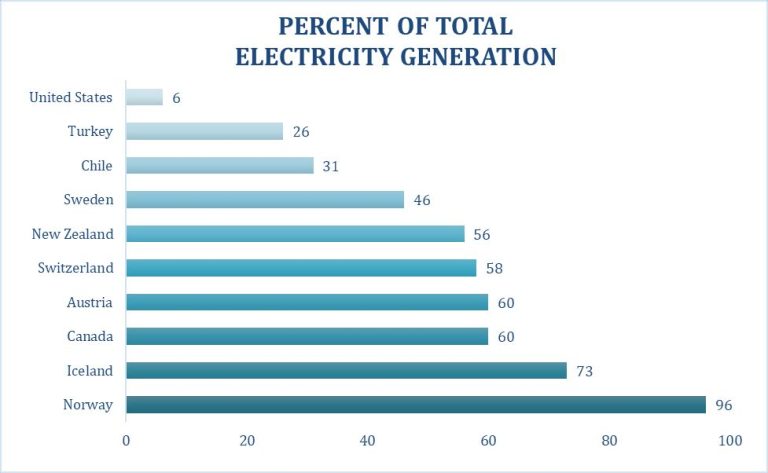How Would You Describe A Hydroelectric Power Plant?
What is a Hydroelectric Power Plant?
A hydroelectric power plant is a facility that converts the energy of flowing water into electricity. It relies on a dam that is built to store water in a reservoir. The dam regulates the water flow and provides pressure for power generation. The water in the reservoir has potential energy due to its height above the turbines. When the water is released from the reservoir, it flows through pipelines inside the dam and then pushes against blades in turbines, causing them to spin. The turbines are connected to generators which convert the mechanical energy into electrical energy through electromagnetic induction. The electricity generated can then be distributed through transmission lines to homes, businesses, and industries.
Parts of a Hydroelectric Power Plant
The key components of a hydroelectric power plant are:
Dam – Dams are built across flowing bodies of water like rivers to store water in reservoirs. The height of the water behind the dam creates potential energy.
Intake – Intake gates control water flow into the penstock pipes that lead to the turbines. Operators can control power output by regulating the flow.
Penstock – Large pipes called penstocks carry water from the reservoir under pressure to the turbines.
Turbines – The rushing water spins hydraulic turbines, which are similar to airplane propellers. The most common types used are Kaplan, Francis and Pelton turbines.
Generators – The turbine spin is converted into electrical energy by generators. The electricity is then transported via huge transmission lines to homes and businesses.
Types of Hydropower Plants
There are three main types of hydropower plants:
Impoundment (Dam)
The most common type of hydroelectric power plant is an impoundment facility. This type of hydropower plant uses a dam to store river water in a reservoir. The water behind the dam flows through an intake and pushes against blades in a turbine, causing them to turn. The motion of the turbines spins a generator to produce electricity. Impoundment facilities provide a water storage capability to generate power on demand.
Diversion (Run-of-River)
Diversion facilities channel a portion of a river through a canal or penstock to spin turbines without the use of a dam. Run-of-river plants allow the water to be diverted from the river, pass through tunnels and spin turbines, before being channeled back into the river. They provide a more continuous supply of electricity than dams, as they do not store water for on-demand electricity generation.
Pumped Storage
Pumped storage facilities pump water uphill into a reservoir at times of low electricity demand to store energy. The water is then released downhill through turbines to generate electricity during high demand periods. Pumped storage essentially acts as a large battery to provide power system flexibility and energy management.
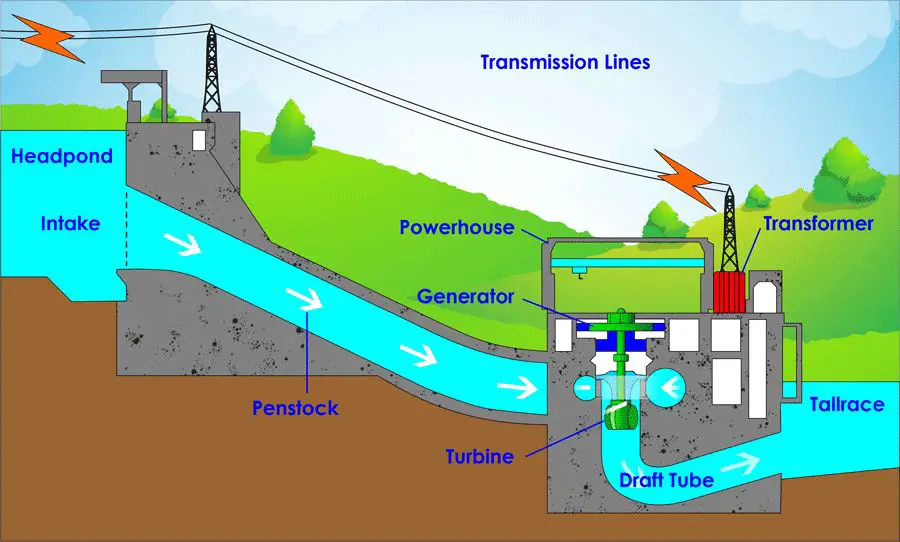
Advantages
Hydroelectric power has several key advantages that make it an attractive energy source.
First, it is a renewable form of energy. The water cycle continuously renews the water in hydroelectric dams and reservoirs, making hydropower a sustainable long-term energy solution.
Second, hydroelectric plants produce zero direct emissions from their operations. Unlike fossil fuel plants, hydropower does not burn fuels and does not contribute to air pollution or greenhouse gases.
Third, hydroelectric power plants often have a long lifespan. With regular maintenance and upgrades, dams and turbines can operate for over 50 years.
Finally, hydropower has relatively low operating costs compared to other energy sources. Once the initial infrastructure is built, the cost of generating electricity from flowing water is quite economical.
Disadvantages
Hydroelectric power comes with some notable disadvantages that need to be considered. The first is the high upfront costs required to build a hydroelectric dam, power station, and associated infrastructure. These projects often cost billions of dollars and can take many years to construct. The massive Three Gorges Dam in China, for example, cost over $60 billion and took 20 years to build.
Hydroelectric dams and reservoirs also heavily impact local river ecosystems and wildlife. They disrupt and alter natural water flows, flood large areas of land, change river chemistry, and hamper fish migration patterns. Entire towns and habitats can be submerged under the new reservoir. This damage to biodiversity and ecological balance is a major concern.
There are also a limited number of suitable sites globally where hydropower projects can be viably developed due to geographical constraints. Not every river can support a hydroelectric dam. This restricts how much hydropower can expand to meet rising energy needs.
Lastly, hydropower generation heavily depends on plentiful water supply. During droughts and low rainfall periods, output can fall sharply. Climate change impacts on weather patterns and increased water scarcity pose a growing risk for many existing and planned hydroelectric projects.
Capacity and Generation
Hydropower is one of the largest and most important sources of renewable energy worldwide. According to the International Energy Agency, hydropower plants have a total installed capacity of over 1,300 gigawatts globally as of 2020, providing approximately 16% of the world’s total electricity production.
China leads the world in terms of installed hydropower capacity, with over 350 gigawatts of capacity as of 2020. This accounts for over a quarter of the global total. Other top countries for hydro capacity include Brazil, Canada, the United States, and Russia.
Canada is the largest producer of hydroelectricity in the world. Hydropower meets around 60% of Canada’s electricity needs, with an installed capacity of over 80 gigawatts. The country has enormous hydro resources, especially in British Columbia, Quebec, Newfoundland and Labrador, and Manitoba.
With most suitable dam sites already utilized in developed countries, the majority of large hydropower projects under development are now located in emerging economies such as China, India, Turkey, Ethiopia, and others. However, upgrades and expansion at existing facilities also continue to increase capacity in places like the United States and Canada.
Environmental Impacts
Building hydropower dams significantly alters river systems and impacts the surrounding environment. Some of the major environmental concerns with hydroelectric power plants are:
Changes to River Flow
Dams change the amount and timing of water flowing downstream. Water held in a reservoir flows more slowly than a free-flowing river. This disrupts the natural seasonal flow pattern and affects wildlife habitat and migration patterns.
Fish Migration Disruption
Dams present a barrier that many fish species cannot pass, preventing access to upstream habitat. This blocks fish migration routes and disrupts the ability of migratory fish to access spawning grounds.
Changes to Habitat
The reservoirs created by dams flood vegetation and forests, altering or destroying wildlife habitat both upstream and downstream. Drastic changes in water flow and flooding also change conditions downstream in terms of habitat, temperature, and oxygen levels.
Dam Safety
Dams are massive structures that allow for an incredible amount of water storage and energy generation. However, the sheer size and force contained within these dams also presents safety risks that must be carefully managed. Dam failures, though relatively rare, can be catastrophic events resulting in the rapid release of the reservoir’s water downstream, causing immense destruction.
Some of the potential safety risks and failure modes include overtopping, seepage issues, piping, earthquakes, and material fatigue over time. To help monitor dam health and mitigate these risks, strict dam safety programs are implemented. These regulations require regular structural assessments, monitoring, emergency action planning, and hazard potential classifications. With routine checkups and maintenance, dam failures can often be prevented. But negligence and lack of oversight have contributed to some of the worst dam disasters.
When dam failures do occur, communities downhill face an immediate threat of flash flooding. The tremendous deluge of water can wipe out anything in its path, resulting in lost lives, homes, and infrastructure. Some of the most devastating dam failures like the Johnstown Flood of 1889 and Banqiao Dam collapse of 1975 each claimed thousands of lives. However, lessons learned from these disasters have improved dam regulations and emergency preparedness. Ongoing dam assessments, upgrading older structures, and planning for worst-case scenarios can help mitigate risks and enhance public safety.
Future of Hydropower
As countries seek to reduce greenhouse gas emissions and transition to renewable energy sources, the future of hydropower looks bright. Here are some of the key trends in hydropower development:
Growing renewable energy demand: With concerns about climate change and energy security, there is an increasing focus globally on expanding renewable energy generation from sources like hydropower. Many countries are adding hydropower capacity to meet rising electricity demand and achieve renewable energy targets.
Upgrades to existing plants: A significant portion of future hydropower growth may come from retrofitting and upgrading existing hydro facilities. By modernizing equipment and increasing efficiency, more power can be generated from the same amount of water. This is a cost-effective way to boost renewable electricity production.
Small run-of-river projects: Large hydro dams are controversial due to environmental impacts. However, small run-of-river projects that divert a portion of river flow without dams are gaining interest. They have minimal impacts and can feed distributed renewable energy to local communities and cities.
With increasing global electricity demand, hydropower’s renewable capabilities and ability to complement intermittent renewables will continue to make it an important part of the world’s energy mix going forward.
Notable Hydroelectric Projects
Some of the most notable and largest hydroelectric projects in the world include:
Hoover Dam
Located on the Colorado River bordering Nevada and Arizona, Hoover Dam is one of the largest hydroelectric projects in the United States. Completed in 1936, Hoover Dam rises 726 feet from the base of Black Canyon. Its hydroelectric power plant has a nameplate capacity of 2,080 megawatts, providing electricity for Nevada, Arizona, and California.
Three Gorges Dam
The Three Gorges Dam on the Yangtze River in central China is currently the largest hydroelectric plant in the world. The dam is 7,660 feet long and reaches a height of 607 feet. Its 32 main turbines have a combined generating capacity of 22,500 megawatts, supplying electricity to central China’s grid.
Churchill Falls
The Churchill Falls generating station in Labrador, Canada has one of the highest energy outputs of any hydro plant in the world. Completed in 1971, the underground power station can produce up to 5,428 megawatts through its 11 turbines. Most of the electricity produced at Churchill Falls is exported to Quebec.
Itaipu Dam
The Itaipu hydroelectric plant on the Paraná River bordering Brazil and Paraguay is one of the largest operating hydro projects in terms of annual energy output. Its 20 generating units have a combined capacity of 14,000 megawatts, generating over 90 terawatt-hours of electricity per year.

